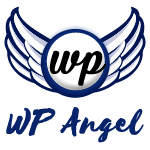Installing WordPress is step one, and we’re not going to cover that here. Your hosting control panel usually offers a way of installing WordPress with one click. You can also go the manual route and there’s a tutorial here: http://codex.wordpress.org/Installing_WordPress
Once you’ve installed WordPress there are still quite a few things to do before you're ready to show your site to the world. Here’s a look at some of the settings you’ll want to update before you begin adding content.
Permalinks
First set up your permalinks. Permalinks determine how your URL’s are created for your site – this is important for search engine optimization (SEO) and it also helps your visitors understand what they can expect when they read a link.
WordPress with default settings has permalinks or urls that look something like this:
http://www.foo.com/?p=123
Not very pretty. Certainly not impressive. And it doesn’t tell us anything about the content behind the link. And since we’re worried about SEO, where are the keywords?
Visit your Settings > Permalinks page to set these.
/%post_title%/
Becomes
http://foo.com/keyword-review/
Where “keyword review” is the Title you entered into the title box on that page/post when you added it in WordPress. It’s much improved and tells you what can be found on the page if you click the link.
I don’t generally recommend using the category within the permalink because it doesn’t work the way people think it does. When you assign posts to more than one category, the category with the lowest ID will be used – and that might not be what you intended or the best choice. It also causes problems when you change categories – because then your urls could change – and this can cause indexing problems with the search engines. (A bad thing worth avoiding.)
Don’t change permalinks if you can avoid it. If you already have a WordPress site set up and you need to make a change – you’ll need redirects to handle the requests for the old urls, so the search engines will pick up the changes with the least problem. Making changes here without redirects turns your site into a big pile of 404 Not Found errors, so don’t change unless you must.
Change your Site Title and Tagline
Found under Settings > General. This will usually have “just another WordPress blog” in the tagline, by default. Here’s where you change it. Site Title should be the name of your site or business. Change your tagline to be something short and descriptive about your site or business.
Depending on your theme, it may or may not be appear visually on the page, however, it is generally seen by the search engines because it does appear in the source code of your pages.
Search Engine Indexing
Make sure your site is set to allow the search engines to index it. You’re asked about this when you initially install WordPress – you can also find it under Settings > Reading, look for Search Engine Visibility. This should be unchecked. (more on indexing under WordPress SEO.)
Excerpts
Use excerpts on the following:
• main blog page or home page (if it shows any posts)
• category pages
• date archive pages
• tag pages
These pages should only have a portion of the content and link to the full content. The full content should only appear on that post’s or page’s single URL. This helps to limit unintentional duplicate content creation, which can cause problems with the search engines.
Excerpts also makes for shorter, easier to scan content, with less scrolling. This makes it easier for people to engage with your site, instead of getting frustrated and leaving when pages scroll on and on until they’ve forgotten what they were looking for.
If you’re using the Genesis framework (more on themes in Choosing a theme) you can set this in the Genesis Theme Settings under Content Archives.
Other themes may have a setting like this, or you might have to edit home.php, archives.php (and possibly others) to adjust the loop. Use the get_the_excerpt() function – this will return the first 55 words of your post. For more on this, see the Codex. Be sure to do this in a child theme, so you can keep up with the updates to your main theme and not overwrite your tweaks.
Categories and Tags
Set up your initial categories (and tags, if you’ll be using tags) Think this through before you begin adding content – you likely need fewer categories than you think. Done correctly, your categories will meet at the intersection of your keyword strategy and the needs and desires of your intended audience.
Hope you have your pages and posts ready, your site is going to need content! You'll also want to check out recommended plugins and be sure to back things up!

